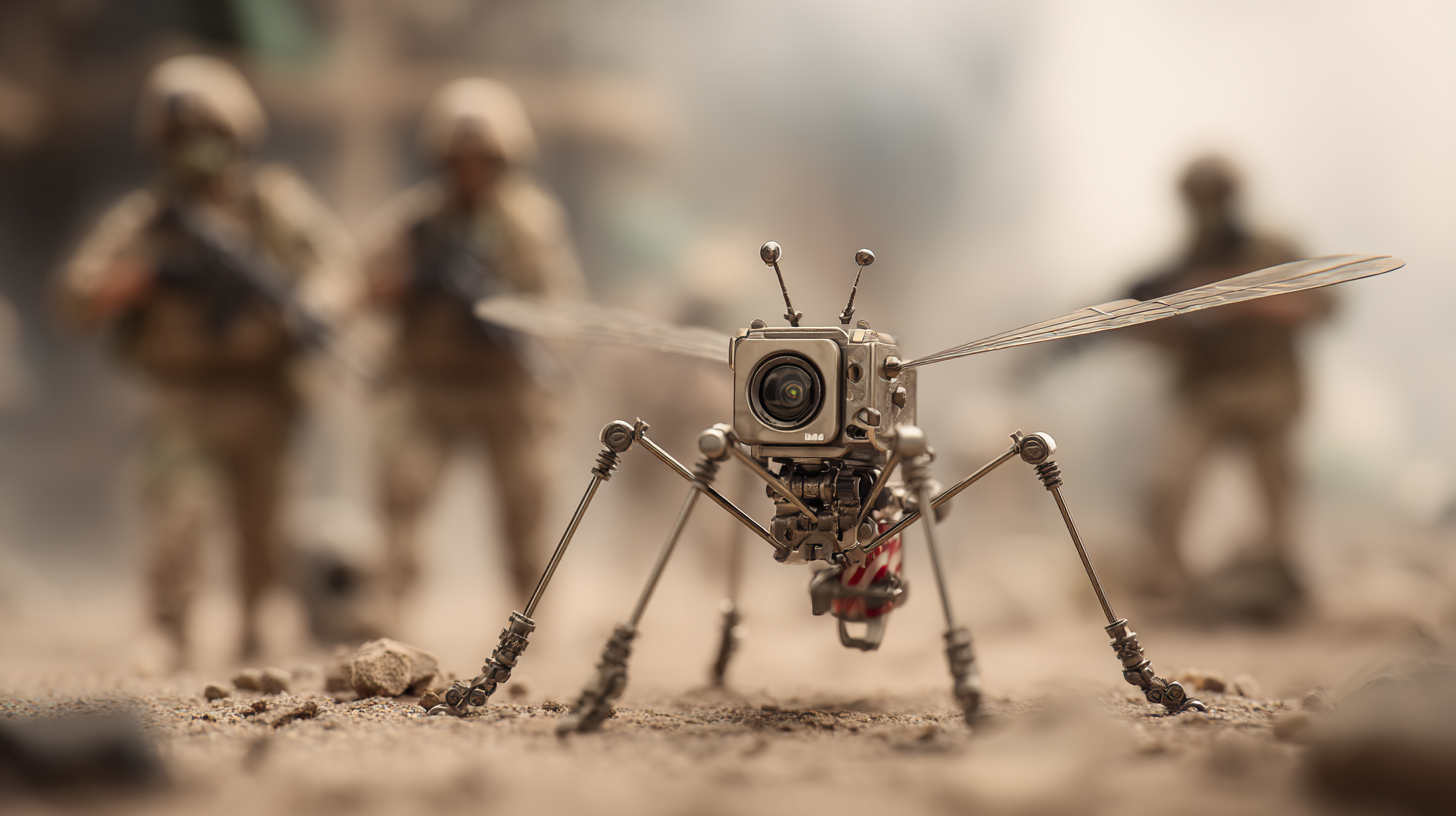Recently, China unveiled a technology that could rewrite the rules of surveillance and espionage: a mosquito-sized spy nano-drone. Starting at just 0.6 centimeters in length, this incredible device is equipped with micro-cameras and microphones, capable of infiltrating buildings undetected.
A concentrate of technology in miniature dimensions
Developed by China’s National University of Defense Technology (NUDT), this nano-drone boasts astonishing technical specifications. Its size can vary between 0.6 and 2 centimeters, with a weight of less than 0.3 grams. These measurements make it nearly impossible to detect with the naked eye or traditional security systems. Its design is inspired by the form of mosquitoes: a slender black body, elongated wings, and thread-like legs, allowing it to blend seamlessly into its environment.
The secret to its agility lies in its bionic wings, powered by advanced micro-actuators capable of flapping up to 500 times per second. This enables precise maneuvering in very tight spaces without making any noise, a stark contrast to the buzzing of traditional propeller drones. Furthermore, the drone is equipped with a suite of cutting-edge sensors, including a CMOS camera with infrared vision for an invisible profile, and a microphone for audio collection. For silent landings, its carbon fiber legs integrate pressure sensors, and for real-time audio and video transmission, the device relies on communication modules with encrypted AES links.
The entire drone is managed by a 9-bit RISC processor, and some versions can even be controlled via smartphone. Current limitations concern battery autonomy and outdoor use, where wind sensitivity makes it impractical; however, for short indoor missions, its effectiveness is undeniable.
Implications for surveillance and espionage
The advent of this nano-drone represents a significant leap in the field of military micro-technology. Its extremely small size allows it to access confined spaces and operate with unprecedented discretion, opening up scenarios that, until recently, belonged to science fiction.
This revelation carries a series of complex implications.
The ability to place a listening and recording device in any environment without its presence being perceived elevates surveillance to an unprecedented level, with profound consequences for individual and corporate privacy. For espionage operations, such a tiny drone offers incalculable advantages, making the collection of sensitive information in critical environments much simpler and less risky for human agents.
While specific details on this drone’s Artificial Intelligence capabilities have not been fully disclosed, it is likely that such an advanced device integrates AI systems for autonomous navigation, target recognition, and processing of collected data.
The technological arms race
This innovation fits into a global context of increasing competition, where major powers are no longer limited to developing traditional armaments but are increasingly focusing on cyber and micro-technological domains.
The emergence of nano-drones with these capabilities raises important ethical and security questions. How will one distinguish a harmless insect from a spy device? What countermeasures will be effective against such invasive surveillance? The proliferation of such technologies could lead to an erosion of privacy and new forms of asymmetric conflict. Experts also warn of risks related to hacking, espionage, and even biological warfare, with future versions potentially carrying viruses or other harmful materials.
While technological progress continues to amaze, it is fundamental that the international community reflects on the implications of these innovations for global security and human rights.
The Chinese nano-drone is undoubtedly an impressive demonstration of advanced technology, but it also serves as a stark warning about the complex dilemmas the future holds.






